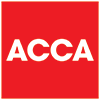Reduce your Tax Bill!
The evenings are brighter and the temperatures are (hopefully!) warming, which means we’re drawing closer to Spring but also to the end of another financial year! As the 5th April approaches, there are opportunities to reduce your Personal Tax liability that will expire on the 6th April.
NOW is the time to give them some careful thought and take steps to reduce your Tax bill.
Please note: These suggestions are purely intended as thought starters. They are not intended to be a replacement for a conversation with your accountant that will confirm whether the opportunity it suitable for your circumstance. Please get in touch if you’d like to discuss any of the following before you take appropriate action.
1 Get as much from the Government as you can.
Pensions benefit from tax relief at 20% for basic rate taxpayers, but higher and additional rate payers can reclaim an additional 20% or 25% tax relief respectively through their Tax Return. That means for a basic rate taxpayer every pound going into your pension only costs eighty pence and for a higher rate taxpayer every pound going into your pension only costs sixty pence.
Lifetime ISA holders can also get up to £1,000 of ‘free’ money from the government each year, if they make the maximum £4,000 contribution. You need to bear in mind that the age limit to open a Lifetime ISA is thirty nine years old. Also be aware that you can withdraw Lifetime ISA money at age sixty, or earlier to buy your first property, but if you withdraw the funds for any other reason (apart from severe ill health) there is an exit penalty of 25%.
Government reliefs and allowances – Check that you’re claiming all that you are eligible for, such as the marriage allowance or tax-free childcare.
2 Use the annual allowances for your pension and ISA
Any income and capital gains made on ISAs and pensions are free from income tax and capital gains tax, making them great savings options.
ISA allowance – Anyone over the age of sixteen can save £20,000 each year into a cash ISA, while those over eighteen can save the same amount into a Stocks and Shares ISA. As mentioned above, those aged eighteen to thirty-nine can open a Lifetime ISA and save up to £4,000 each year.
You cannot carry forward to future years any ISA allowance that you don’t use before the 5th April.
The pension annual allowance for this tax year is £40,000 or 100% of earnings if that is lower. This includes your contributions as well as any employer contributions.
The annual allowance can be carried forward for up to three years. Anyone with a very high income or who has already started to take taxable income from their pension will have a restricted annual pension limit.
If you plan to carry forward any previously unused pension allowance, you’ll only get tax relief on personal contributions up to 100% of your earnings for that year. People with no earnings (including children) can still save up to £3,600 a year in a pension (including basic rate tax relief).
3 Shelter more of your investments from tax
If you have investments outside of your ISA ‘Bed and ISA’ can be used to protect them from tax. You’ll need to be sure that you have enough ISA allowance left, before selling the investment outside of the ISA, and moving the proceeds into an ISA to immediately purchase the same investment from within the ISA.
Any gains made on the sale of the investment before it moves into the ISA may attract tax. As a result, the usual step here is to sell enough of the investment to utilise the capital gains tax free allowance of £12,300.
4 Use your capital gains allowance to cut your future tax bill
Investors can make investment gains of up to £12,300 in 2021-22 without paying any Capital Gains Tax (CGT).
Gains over that amount are added to income and if they fall in the basic rate tax band are taxed at 10% and at 20% for the higher rate tax band. An additional 8% is added to the tax rate if the gains are from a second property.
The annual capital gains tax-free allowance cannot be carried forward into future years, so if you have investments with gains you should consider whether to realise some of that gain before the 5th April to make the most of your tax-free allowance.
Couples can effectively double this allowance as you can transfer investments to your spouse to use their annual CGT allowance. This year’s tax free total could be £24,600.
5 Beat the dividend tax rise with your ISA
People with income-producing investments outside an ISA or pension earning more than £2,000 in dividends in the tax year will face a higher tax rate this year. This is because dividend tax is increasing by 1.25% on all tax rates, regardless of the level of dividend tax you pay.
This means any dividend income above this amount is taxed at 8.75% for a basic rate taxpayer, 33.75% for a higher rate taxpayer or 39.35% for additional rate taxpayers.
Having your income-producing investments inside an ISA is therefore increasingly advantageous. If you have too many investments to move them all into an ISA in one tax year, you should prioritise those that pay the highest dividends.
6 Avoid getting caught in the trap!
The tax-free personal allowance for most people is currently £12,570. When your taxable income reaches £100,000, your personal allowance is cut by £1 for every £2 of your income, which means you lose it completely once your income reaches £125,140.
For example, someone who gets a pay rise from £100,000 to £110,000 will lose £5,000 of their personal allowance. They will be taxed at the normal 40% income tax on their pay rise, amounting to £4,000, and then taxed at 40% on their lost personal allowance, amounting to £2,000. This means they pay £6,000 on the £10,000 pay rise – an effective tax rate of 60%.
If you’re in this position, you could consider reducing your taxable income so that it falls below the £100,000 level where the personal allowance starts to be eroded. There are two ways you can do this: by making charity donations or contributing to a pension.
By contributing to a pension, you are a making tax savings in the form of getting your personal allowance back whilst also saving for your future and benefiting from pension tax relief at 40%, so you wipe out the 60% effective tax rate completely.
7 Child benefit
In a similar way as above, child benefit reduces when one half of the couple earns more than £50,000, and the benefit will cease entirely when they reach £60,000. The rule applies even if just one parent is earning more than £50,000, while the other has no earnings. Conversely, if both partners are earning £48,000, the benefit continues in full,
Parents who are just over the threshold can get around this by increasing their pension contributions as the salary relevant to child benefit high income charge is your salary after any pension deductions. If sufficient contributions are made to reduce your salary back below the £50,000 level you will once again qualify for the full amount of child benefit.
Another option is to make charitable donations from any income over the £50,000 limit, which you’ll need to declare to HMRC on your tax return.
8 Start saving for your children
There are also tax allowances for which children qualify:
The Junior ISA allowance is £9,000 a year. Children can’t access the money until they are eighteen, when it automatically turns into a normal ISA and transfers into their name.
A Junior SIPP allows you to contribute up to £2,880 each year, with government tax relief automatically boosting that to £3,600. Access isn’t possible until age fifty seven, and the government may increase that age limit, but the compound investment returns could be considerable.
Business News
We send regular updates that keep clients aware of changes and suggestions on a wide range of subjects; if you’d like to receive those too, just add your details below and we’ll do the rest! We promise not to bombard you and you can unsubscribe at any time.


